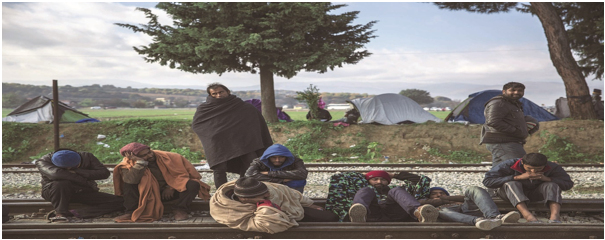INP-WealthPk
Abdul Ghani
Pakistan’s migration patterns documented in the Labour Force Survey 2024-25 show extensive internal and inter-provincial movement across the country, reflecting mobility trends among individuals aged ten years and above. The 37th round of the national survey includes detailed information on internal migration, duration of stay, reasons for movement, and characteristics of migrant households.
According to the Labour Force Survey 2024-25 document available with Wealth Pakistan, the migration section records both rural-to-urban and urban-to-rural flows, as well as movement across provinces. The survey defines migration as the movement of people from one district to another, or from one province to another, for residence. It records the current place of residence of individuals and compares it with the previous place of residence to classify migrants.
The survey provides demographic details of migrants, including age, sex, educational status, and duration of stay at the current location. The dataset includes information on the proportion of migrants within the national population, the distribution of migrants by province, and patterns of household mobility. The survey shows that migration occurs for multiple reasons, including family-related movement, employment, marriage, education, and other personal or economic reasons.
The Labour Force Survey documents the proportion of individuals who migrated for each category and presents a gender-wise distribution. In the case of women, marriage-related migration forms a substantial part of movement patterns, while men more frequently migrate for employment. The survey also records individuals who moved for education, reflecting student mobility across districts and provinces. The survey provides information on the duration of stay of migrant individuals.
It categorizes migrants based on how long they have lived in their current place of residence, including less than one year, one to four years, five to nine years, and ten or more years. These duration categories help illustrate whether migration is recent or long-term. The migration data also captures patterns of return migration, where individuals have moved back to a previous district or province after living elsewhere. The Labour Force Survey offers provincial breakdowns of migration.
Each province records both incoming and outgoing migrants, reflecting the movement of households and individuals across Pakistan. Urban centers generally attract larger numbers of migrants, while rural regions also record significant movement driven by social, familial, and livelihood-related factors. The dataset includes the distribution of migrants by type of locality, distinguishing between rural and urban areas, and shows how migration patterns differ between these areas.
The survey also includes information on the education levels of migrants. It presents the distribution of migrant individuals across educational categories, ranging from those with no schooling to those with higher education, helping indicate whether migration is more common among certain educational groups. Employment-related data for migrants is also included. The survey documents the industries in which migrants are employed, their employment status, and their occupational characteristics, showing how migrant workers are distributed across different sectors of the economy.
Household migration characteristics are also noted in the survey. These include the number of individuals per household who migrated, whether households moved together or in segments, and whether the head of household is a migrant. The findings offer insight into the composition and structure of migrant households and the circumstances under which they relocated. Data for the Labour Force Survey 2024-25 was collected from 53,974 households selected under a stratified two-stage sampling design covering all provinces and Islamabad.
Information on migration was collected as part of the household schedule and was subsequently compiled into national and provincial estimates. The sampling framework uses the 2023 census population base with an annual growth adjustment of 2.075 percent to generate indicators. The migration section of the Labour Force Survey 2024-25 provides a comprehensive statistical account of internal and inter-provincial mobility in Pakistan, documenting reasons for movement, demographic profiles, duration of stay, and employment patterns of migrants across the country.

Credit: INP-WealthPk












